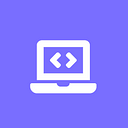7 Best Figma Tutorials for Beginners [2025 MAR]— Learn Figma Online
Learn Figma for UI/UX Design with the best Figma tutorials for beginners in 2025.
1. Figma UI UX Design Advanced
This advanced Figma course, led by Dan Scott, is designed for UI/UX designers who have a foundational understanding of Figma and are ready to level up their skills. Throughout the course, you’ll dive deep into advanced features such as multilevel nested auto layouts, variables for prototyping, light and dark modes, design tokens, and more. You’ll also explore advanced animation techniques using Lottie files, creating responsive design elements, and mastering typography.
The course goes beyond technical skills, focusing on professional workflows, collaboration techniques, and accessibility, ensuring your designs are polished, inclusive, and production-ready.
As you progress, you’ll work on assignments and projects, including user testing and creating UX design masterpieces to build your portfolio. With Dan’s expert guidance, you’ll learn how to collaborate effectively with designers and developers, export assets for production, and use AI to enhance your process.
This course is ideal for anyone who has completed the Figma Essentials course or those with basic Figma knowledge looking to unlock the full potential of their UX/UI design skills.
2. Learn Figma — UI/UX Design Essential Training
This Figma course will use the powerful tools within Figma to cover user interface designing. The first section will cover the Figma interface and where you can find powerful tools like constraints to make your designs responsive, and components to build a library of design elements to use throughout your projects. It will also go over real-time team collaboration and how you can use Figma to work closely with others on the same project.
Later, it will guide you through designing and prototyping a “Chef’s Recipes” App, which will include multiple artboards, custom icon designs, editing images and text, and everything else you need to create a polished, realistic design.
3. Figma for UX Design
Discover how to use Figma, an online UX design and collaboration tool, for projects you create or projects distributed across a team.
In this Figma course, you will learn the following topics:
- Orienting Yourself within Figma
- Project Creation
- Prototyping, Collaborating, and Exporting
This course begins by explaining what Figma is and how to get a Figma project started. Next, discover how to add content to your design project by working with frames, creating and editing shapes, drawing, adding, and formatting text.
Plus, learn how to create a prototype, share designs using Figma's collaboration features, and generate assets for development.
4. The Complete Figma UX/UI App Design Course For Beginners
Learn how to design engaging mobile apps, and websites with Figma as a UI/UX designer tool. All hands with real-world projects.
In this Figma course, you will learn:
- Figma UI/UX Design elements
- Frame vs Slice tool
- Vector shapes in Figma UI/UX
- Figma online vs desktop version
- The all-important Figma constraints and components
- Understanding Figma design principles including UI/UX design
- Real-world Figma projects and Creating a Blog/Website
- Keyboard shortcuts in Figma
- Time-saving techniques in Figma
This course walks you through hands-on Figma Design training from the very basics of opening Figma all the way to becoming comfortable working within the Figma environment.
You will gain a solid understanding with this Figma UI/UX course to help you get that promotion. You will keep going until you learn all of the fundamentals of Figma Design.
When you finish this course, you will know more than most people who use Figma at their jobs every day.
5. Prototyping with Figma
In this Figma course, you’ll learn how to build interactive and sharable prototypes in Figma, a web-based visual prototyping tool. You’ll create a prototype for a “prosumer” mobile photography app, and by the end, you’ll have a better understanding of how to create interactive prototypes that can be shared with project stakeholders and team members.
You will learn:
- Prototyping
- Figma
- Project collaboration
6. The Complete Figma UX/UI App Design Course For Beginners
This course walks you through hands-on Figma Design training from the very basics of opening Figma to becoming comfortable working within the Figma environment. You will gain a solid understanding with this Figma UI/UX course.
You will learn-
- Figma UI/UX Design elements.
- Frame vs Slice tool.
- Vector shapes in Figma UI/UX.
- Figma online vs desktop version.
- The all-important Figma constraints and components.
- Understanding Figma design principles including UI/UX design.
- Real-world Figma projects — Creating a Blog/Website, and much more…
- Keyboard shortcuts in Figma.
- Time-saving techniques in Figma.
- Learn how to design stunning apps, blogs, or websites using Figma.
Learn design principles. Understand the fundamental concept of Wire Framing. Learn shortcuts and techniques for creating an effective App design. Learn UI/UX design essentials. Learn Interaction Design Vs Interactive Design.
7. Figma for UI Designers
During the course, you will see all the tools and working techniques of Figma. The interface and tools available in Figma may be intuitive and user-friendly, but it’s always good to use some reliable schemes and efficiency–improving techniques.
This course teaches:
- Figma tools and interface
- Apple Watch project
- Collaboration in Figma
- Components in Figma
- Exporting graphics
- Optimizing vectors
Update: We have created the latest version top tutorials to Learn Figma. Feel free to checkout the best Figma tutorials of the year.
Thank you for reading this. We have curated top tutorials on more subjects, you would like to see them:
Did you like the post?
Give me claps 👏 ! you can give up to 50 times to the clap, and that many more people find and know this post, and of course… don’t forget to share.
Let’s see that applause!
Disclosure: We may get a small affiliate commission if you buy a course through links on this page. Thank you.

